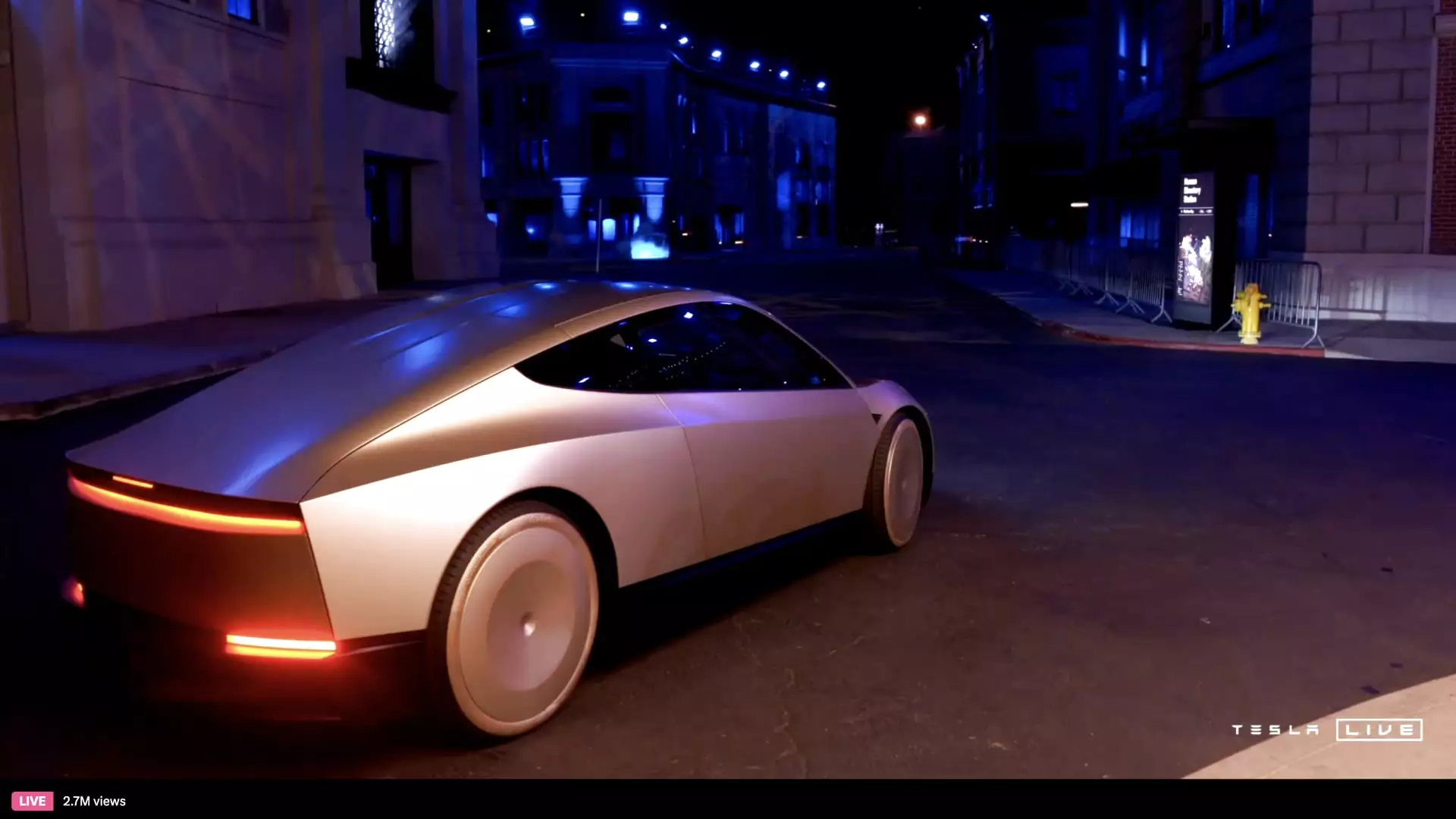The landscape of transportation is continually evolving, and the latest chapter in this saga has been penned by none other than Tesla CEO Elon Musk. With the introduction of the Cybercab concept and the ambitious plans for the coming years, Musk aims to ignite excitement and anticipation surrounding driverless vehicles. However, the decade-long trajectory of autonomously powered cars raises essential questions about the feasibility and reliability of these promises.
Unveiled during the company’s latest event at Warner Bros. studio in Burbank, California, the Cybercab emerged as a sleek, futuristic two-seater devoid of traditional driving controls like steering wheels and pedals. Musk presented 21 operational units alongside 50 vehicles equipped with Tesla’s latest autonomous technology. Despite the fanfare surrounding the Cybercab, specifics about production timelines and locations were conspicuously absent. Musk asserted that consumers would be able to acquire this innovative vehicle for under $30,000, but details concerning the rollout remain elusive at best.
Integral to Tesla’s vision is its Full Self-Driving (FSD) software, which Musk touted could become “unsupervised” in Texas and California as soon as next year. Currently, the FSD system offers a “supervised” mode, requiring constant human oversight. Musk’s description of a “glorious future” for driverless technology resonates with optimism, but skepticism lingers. The hurdles of transitioning to a fully autonomous system are substantial, including safety concerns and regulatory approval—a reality that Tesla has danced around for several years.
Musk’s enthusiastic declarations about FSD put the spotlight on the technology’s evolution. Yet, this optimism is intertwined with a history of unmet predictions. From initial claims about achieving full autonomy within three years back in 2015 to the lofty goal of having one million robotaxi-ready vehicles operational by 2020, Musk’s track record is marred by missed deadlines and vague future possibilities.
In addition to the Cybercab, Musk revealed plans for the Robovan, an innovative vehicle designed to transport up to 20 passengers or goods. With a vision to address high-density transportation needs, Musk presented this vehicle as a solution tailored for sporting events or other large gatherings. The Robovan promises inductive charging, allowing it to replenish its energy without cumbersome plug-in stations. This concept caters to the growing demand for efficient transit solutions in urban landscapes grappling with congestion and pollution.
Although Musk’s ardent supporters may share his enthusiasm for Tesla’s autonomous journey, investors face a quandary. The persistent cycle of promises, delays, and aspirational statements may lead to questions about the reliability of these commitments. Musk’s assertion that doubt regarding Tesla’s capabilities should deter potential investors suggests a rather polarized view where skepticism is met with dismissal.
With a backdrop of ambitious projections crumbling over the years, investors might find themselves balancing hope against a warehouse of historical skepticism. This dynamic leads to contemplation about the maturity of Tesla as a company and its ability to deliver transformative technology that genuinely reshapes how we understand and experience transportation.
As Tesla circles back to unveiling new products and car concepts, the narrative of autonomous vehicles continues to unfold. Fans and critics alike are left to dissect the implications of the Cybercab and Robovan on societal norms, urban transit challenges, and environmental sustainability. Musk’s exuberant proclamations drive media narratives, yet the reality of these innovations relies on more than just promises—it demands tangible results.
With a history littered with ambitious yet often unfulfilled timelines, the critical examination of Tesla’s strategies reveals a need for patience and pragmatic evaluation. The company’s journey toward becoming a leader in autonomous driving technology is undoubtedly fascinating, yet its path is fraught with obstacles that must be acknowledged to fully grasp the future of mobility. The road ahead is indeed complex, but the destination promises to be game-changing.


Leave a Reply